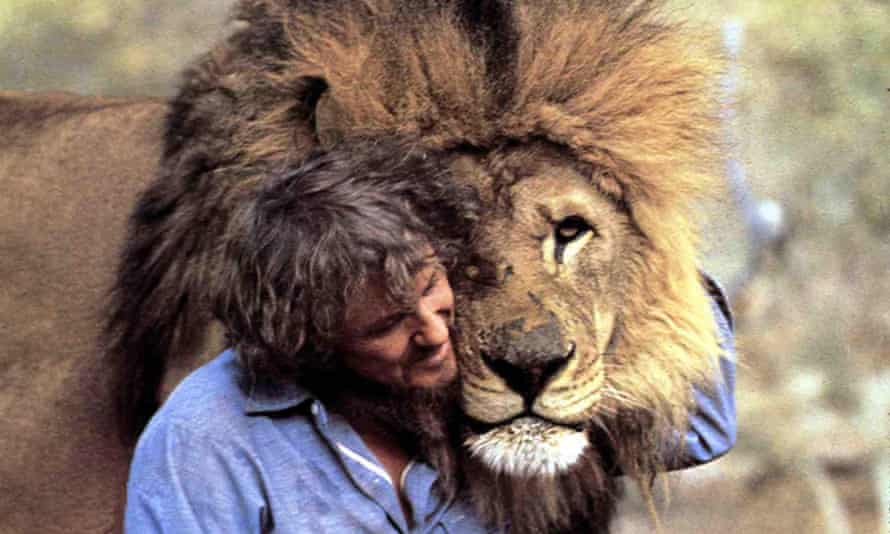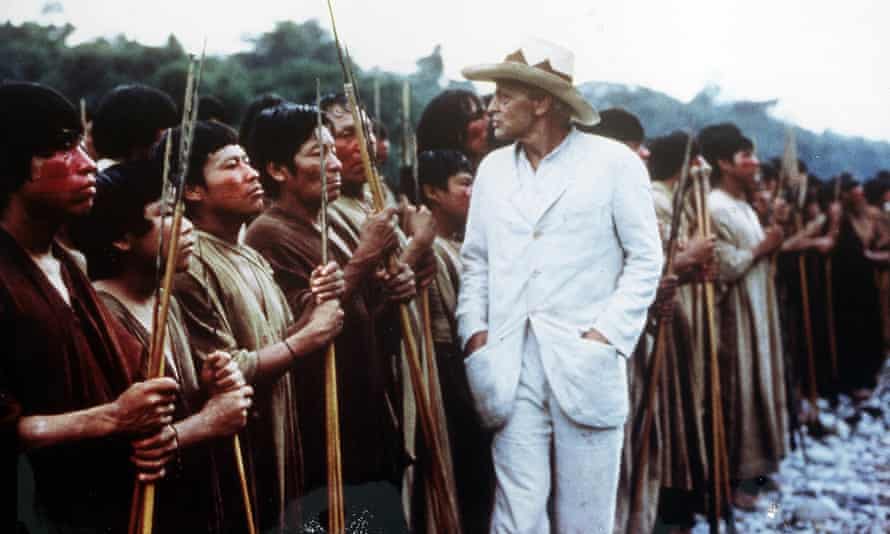 |
| Brandon Lee in 1993’s The Crow, in which he was fatally shot on set by another actor. |
‘No one should be killed on set’: tragic history of fatalities during filming
On-set deaths like Halyna Hutchins’ remain thankfully rare – but only one film director has been convicted in the US for such incidents
Fri 22 Oct 2021 15.56 BST
S
Baldwin, who has been questioned and released by the Santa Fe authorities, also shot director Joel Souza in what has been described as an accident involving a prop gun.
Souza was taken to hospital, but reports suggest he has now been released.
The investigation being mounted by the Santa Fe sheriff’s office will focus on the type of bullets used in the prop gun.
Film and TV crews generally use real firearms loaded with dummy rounds. Yet insufficient checks mean live ammunition, or blank cartridges still containing powder charge and primer, can remain in the gun’s barrel.
Such negligence in 1993 caused the death of Brandon Lee, who was fatally shot at close range on the set of The Crow by fellow actor Michael Massee.
Massee did not face charges, but took time out of the profession and reported continued nightmares 12 years on. The production company also avoided charges and completed the remainder of the film using a double and digital technology.
On Friday, a tweet from Lee’s account, which is handled by his sister, expressed sympathy for the victims and their families before continuing: “No one should ever be killed by a gun on a film set. Period.”
It remains unclear whether Baldwin was rehearsing or actually filming a scene at the time of the incident, and if so, why the discharged gun was pointing towards crew members rather than a fellow actor. There is also the suggestion that at least two bullets were fired, as Hutchins was shot in the stomach and director Souza in the head.
An actor fatally injuring a crew member in such a manner appears possibly unprecedented. Most lethal set incidents have involved on-screen stars or stunt people, with helicopters accounting for the majority of fatalities.
The most recent fatal accident occurred earlier this year, when a crew member was electrocuted on the set of Indian film Love You Racchu. Three men, including the film’s director, were killed in a helicopter crash in 2017 on the set of the sequel to the award-winning documentary Beyond Beauty – Taiwan from Above.
Other than Lee and Hutchins, only one person appears to have died by gunfire on set at the hands of a colleague: Charles Chandler, an extra on Cecil B de Mille’s 1915 film The Captive, who was shot by a live bullet from a rifle.
The actor Jon-Erik Hexum died accidentally after playing Russian roulette between takes on 1984’s Cover Up, while sound technician Bryce Dion, who was making a documentary called Cops, was caught in the crossfire when Omaha police shot a robber in a restaurant in 2018.
The use of firearms on film sets must be in the presence of an armourer, a safety officer and a stunt coordinator. Crew and cast are briefed multiple times, and local police and nearby civilians are also notified.
On Friday, the director Ben Rockula called for the use of blanks to be outlawed. “They’re extremely dangerous and under the best of circumstances they eat time,” he wrote.
“Every time you have to shoot a scene with blanks, you’re going to lose 30 minutes to safety meetings, passing out ear plugs to the entire crew, setting up Plexiglass and plywood, on and on. It has to be done to avert tragedies like this. And it doesn’t always work.”

Hutchins is the fourth cinematographer known to have died during a film’s production. Conrad Wells was one of 10 crew killed during aerial filming on 1930’s Such Men Are Dangerous; Blair Witch Project cinematographer Neal Fredericks drowned after the light aircraft from which he and fellow crew members were filming CrossBones in 2004 crashed off the Florida coast. Chan Kwok-Hung also drowned while conducting a water shoot for the Jackie Chan movie Skiptrace in Hong Kong in 2014.
Injuries are more common. The cinematographer Jan de Bont, who later directed Speed and Twister, was among 70 crew members injured on the set of the 1981 film Roar, about a wildlife preservationist. A lion scalped De Bont, who required 220 stitches; actor Tippi Hedren was also bitten in the neck by a lion and bucked off an elephant, causing substantial damage to her head and legs.
Around 350 deaths have been caused by accidents sustained on film and TV sets. Many others have been attributed to injuries sustained or unsafe working environments. Of the 220 cast and crew who worked on The Conqueror (1956), at least 91 developed cancer and more than half died of the disease. This was linked to the shoot having taken place in an area of rural Nevada where extensive nuclear testing had taken place three years before.
The worst single incident occurred on the set of 1989 Hindi-language television drama The Sword of Tipu Sultan, when a fire broke out at the studio, killing 62 cast and crew. Sanjay Khan, the film’s director and star, spent 13 months in hospital undergoing 72 operations to treat his burns.

Other notoriously dangerous shoots include Fitzcarraldo, Werner Herzog’s 1982 Peru-set epic, which resulted in numerous injuries and the deaths of several indigenous extras. One Peruvian logger was forced to amputate his own foot after being bitten by a venomous snake.
Early film sets often played fast and loose with the lives of their workers. A year after three people died and many more were seriously injured during the great flood scene in 1928’s Noah’s Ark, safety regulations were introduced.
Yet filming codes were not significantly revised until the early 1980s, in the wake of an accident on the set of Twilight Zone: The Movie, in which two children and one actor were killed by a low-flying helicopter. Director John Landis was later acquitted of their manslaughter.
In 2014, the Safety for Sarah movement was established to protect film production crew, prompted by the death of a camera assistant on Midnight Rider.
Sarah Jones was killed – and several others injured – by a train during filming, in an accident deemed to be the result of unsafe actions by the film’s director and producer, Randall Miller. Miller pleaded guilty to involuntary manslaughter, serving a year in jail, followed by nine years of probation. He is the only film director to have been convicted in the US of the death of a cast or crew member.
DE OTROS MUNDOS
Alec Baldwin / Las buenas obras
Asia Argento critica a Alec Baldwin por sus declaraciones en 'Saturday Night Live'
Alec Baldwin / Un machista peleón reformado en padre de familia y azote de Trump
Del cine a las redes sociales, los Baldwin siguen en forma
Hilaria Baldwin / La mujer española de Alec Baldwin que no es tan española
Alec Baldwin, tras el trágico accidente: “Mi corazón está roto, estoy conmocionado”
Alec Baldwin / Un actor marcado por el escándalo
Jornadas extenuantes y fallos de seguridad / Las acusaciones en el ‘caso Baldwin’
DRAGON
Alec Baldwin profile / A versatile but troubled star
Alec Baldwin kills woman by firing prop gun on film set of Rust



No comments:
Post a Comment